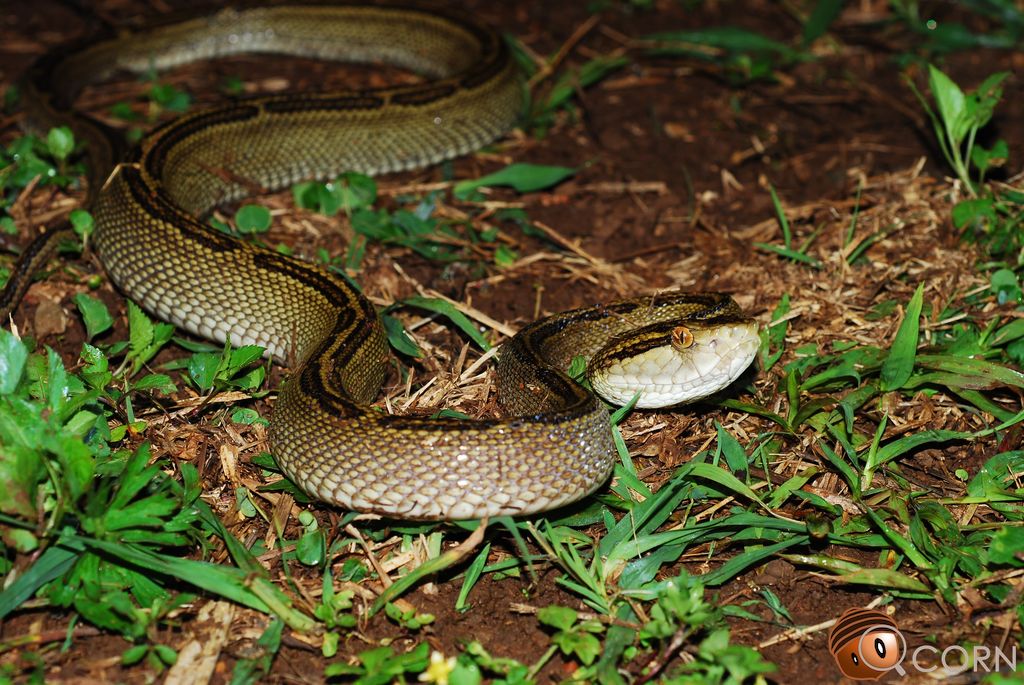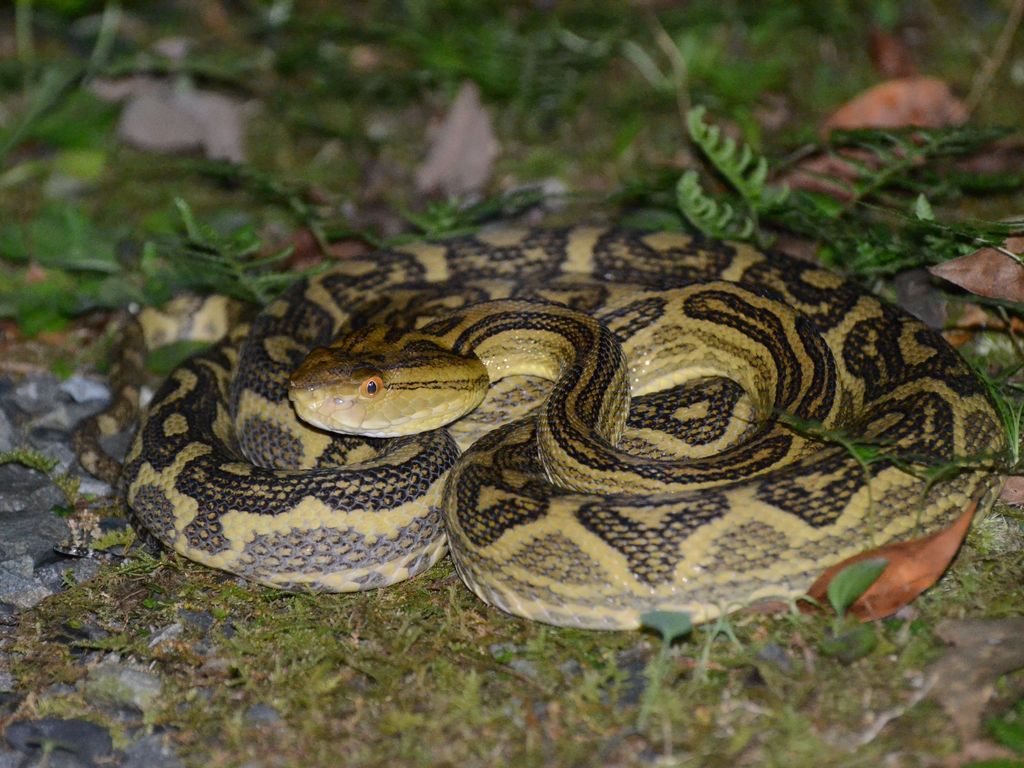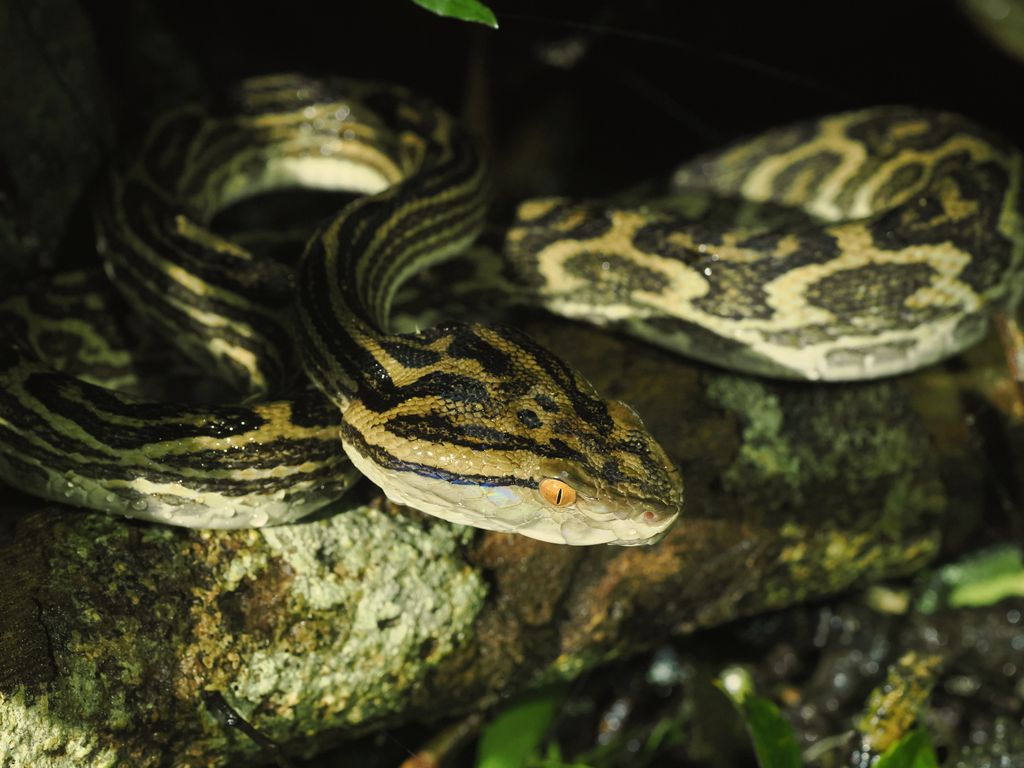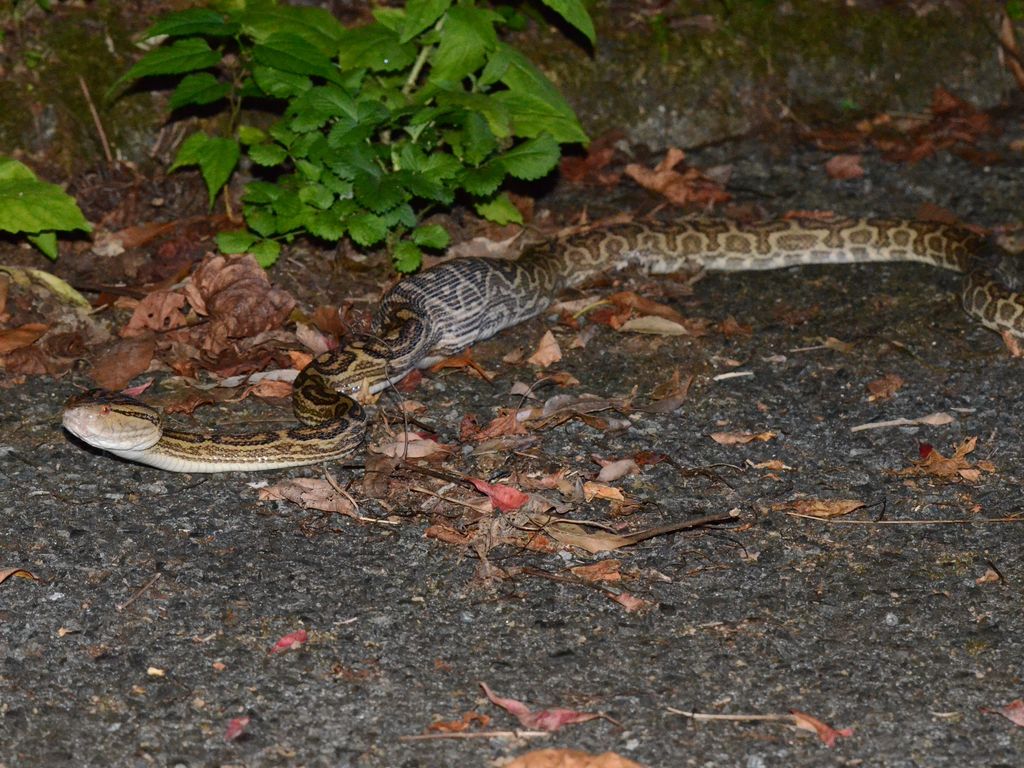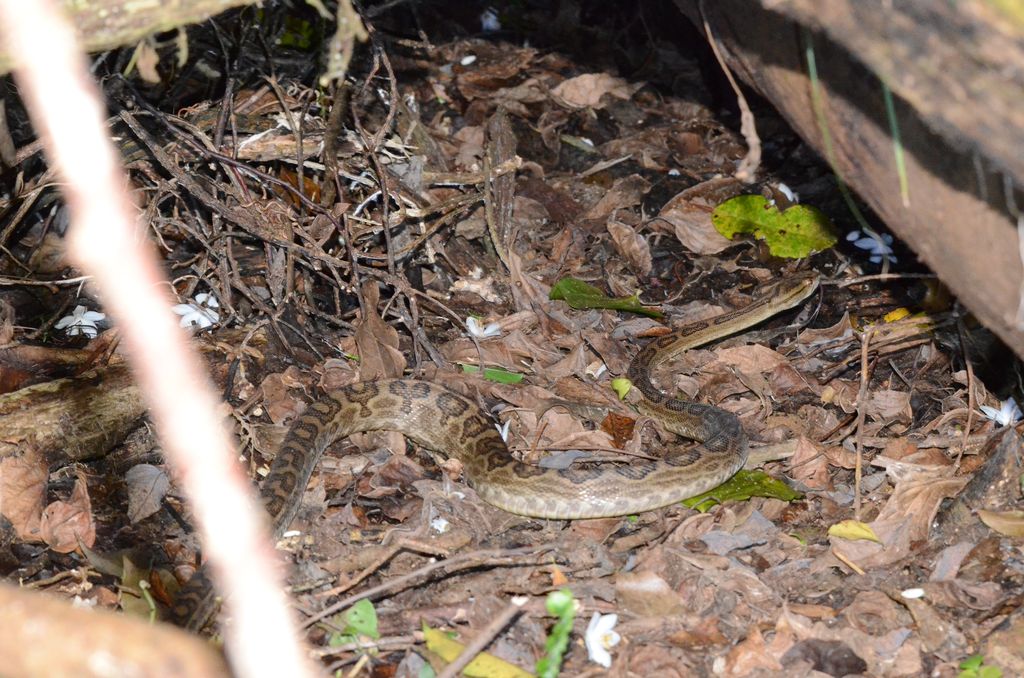Protobothrops flavoviridis
Japanese Name: ハブ
Chinese Name: 波布、黄綠龜殼花
English Name: Habu
Origin: Some islands of the Okinawa Islands and Amami Islands
The Habu is undoubtedly one of Japan’s most beautiful and fascinating snakes, yet it is also one of the most venomous and dangerous. It is found on certain islands of the Okinawa and Amami Islands, with its distribution likely influenced by sea level changes and island isolation.
Habu are nocturnal and inhabit a wide range of environments, from forests to farmland. They may even appear in residential areas in search of rodents. In Okinawa, people have long feared Habu due to frequent bites, sometimes resulting in fatalities, especially among farmers. Because of this, many locals believe that Habu should be killed on sight, and even today, government-led extermination efforts continue. As a result, Habu populations have declined significantly, and they are now rarely seen in Kunigami. However, as apex predators in the forest ecosystem, Habu play a crucial role in maintaining ecological balance. Hopefully, excessive culling will not lead to their extinction.
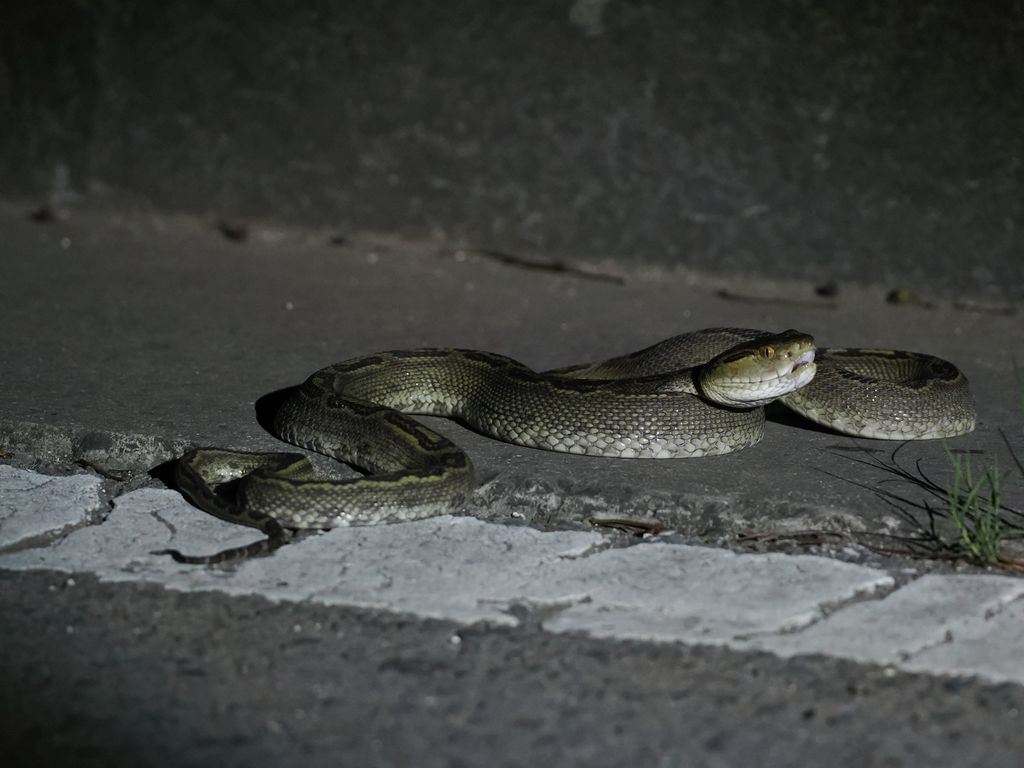
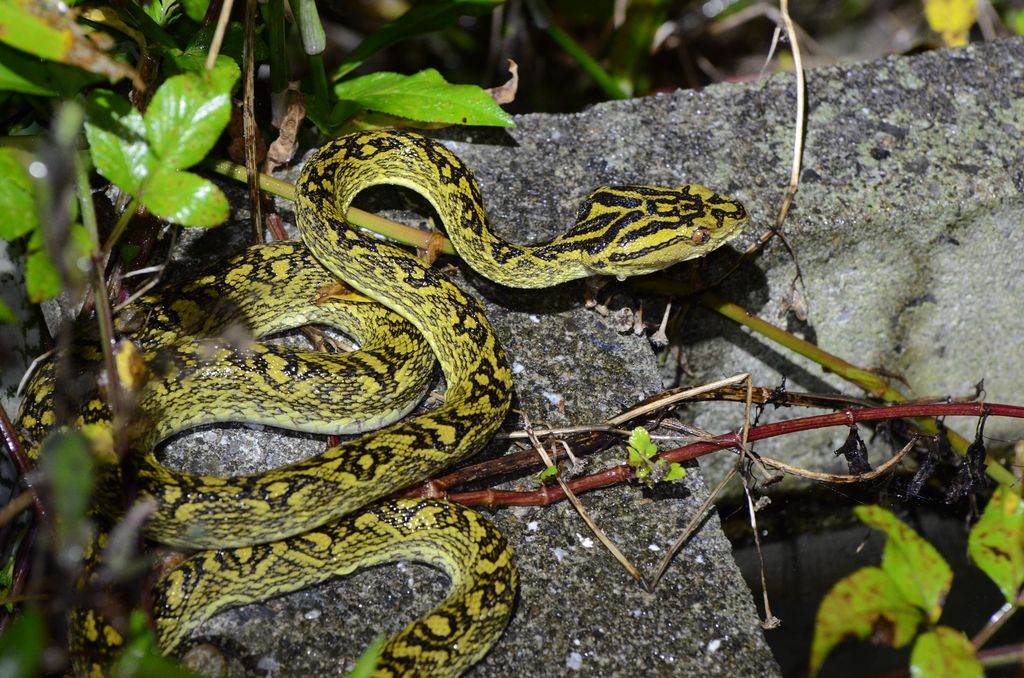
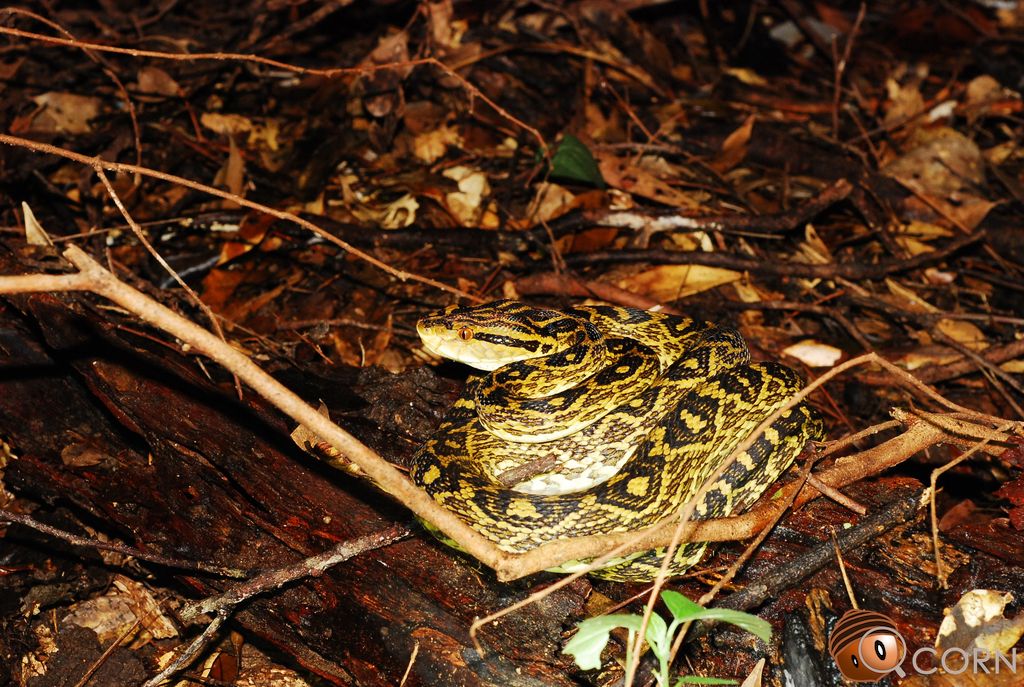
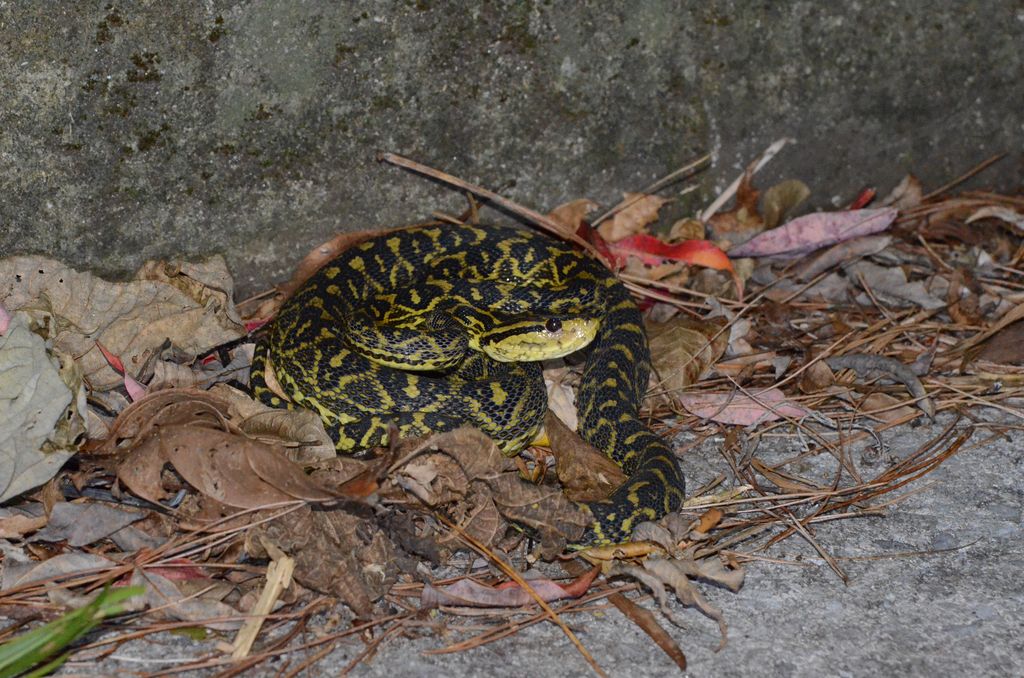
The coloration and pattern of Habu vary by region. On Kume Island, some individuals have distinct linear markings, whereas the Habu in the Amami Islands (Amami Oshima and Tokunoshima) tend to have a reddish hue with large, pale blotches.
